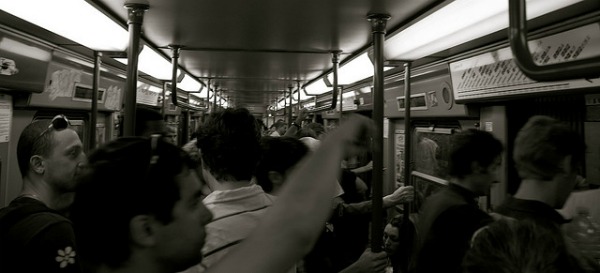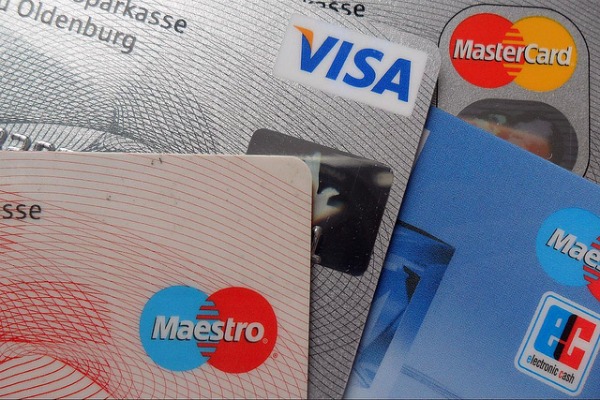Travel Safety in Italy: Money Safety & Anti-Pickpocketing Tips
Although your risks of getting into a situation in Italy that’s dangerous to your person are fairly remote, pickpocketing is a very real concern – especially in some cities that are big tourist destinations. There are two main ways to combat pickpocketing – make yourself an unappealing target, and have a solid backup plan.
>> Do you have travel insurance for your Italy trip?
Make Yourself an Unappealing Pickpocketing Target

Let’s face it – as tourists, we’re often pretty easy marks for would-be thieves. While we stand gaping in awe at some ruin or monument, glancing from our guidebook to the attraction in question and back again, we’re not paying close enough attention to our bag or wallet. What’s more, if we’ve hastily opened our bag to get out a camera, we may have left ourselves open – literally – to an easy grab-n-go.
The best way to make sure potential pickpockets don’t look at you and hear cash registers ringing is to be aware of your surroundings. Of course, you’re still going to stop and gawk at monuments, and you’re still going to take photos, and get out a map when you’re lost – but when you know your attention will be distracted, make certain your bag is closed up tight, you’re not exposed with your back to a busy sidewalk, and your purse and/or wallet are on the front of your person. It’s little things like this that help make pickpockets choose someone else as a target.
Remember to be especially attentive in busy areas like public markets and train stations, where people are moving quickly and a theft can happen in an instant. Personally, I don’t love walking through places like public markets with a backpack, since I don’t feel like I can keep an eye on it as well as I can with a bag that’s in front of me – but if you’re a backpack person, that’s fine. Just be careful with making sure it’s zipped up tight – and, again, being aware of your surroundings – and that should help quite a bit.
Another good tip for women or anyone carrying a bag is to make sure your bag isn’t on the street side when you’re walking on the sidewalk. It’s not uncommon in some places for scooter-riding thieves to ride along and quickly cut or simply tear a bag from the shoulders of an unsuspecting person before riding off. You’ll see nothing of them or your bag before you even know what’s going on. Moving your bag to the non-street side of your body helps make this less likely to happen to you.
Guys, even if you’re the wallet-in-the-back-pocket creature of habit, you might want to rethink that for a trip to a popular tourist destination (Italy or anywhere). Carrying your wallet in a front pocket is a good start, but doesn’t dissuade all thieves. You can try things like money clips for just what you need that day (with the rest going in your money belt), and there are some wallets that are designed to be tougher to pull from a pocket (these usually have a sueded outside so there’s more friction than a typical smooth, leather wallet).
When you sit down at a cafe, don’t hang your purse or backpack over the back of your chair. Either keep your bag on your lap, or at your feet, or – if neither of those is comfortable – hang it from a purse hook hung on the edge of your table. These are available at many travel-related shops, and they’re in abundance online in multiple colors and styles. They’re among the things I recommend people pack for Italy trips (and you can find them on Amazon). Guys, don’t be put off by the name “purse hook,” either – some aren’t girly-looking at all, and they can hold quite a bit of weight (i.e. that daypack you’re lugging around).
Finally, don’t advertise wealth. Leave the expensive watches and jewelry at home. Pickpockets are predisposed to assume that where there’s an expensive bauble there’s also a potential payout. Don’t give them a reason to look more closely at you in the first place.
Have a Backup Plan if Your Credit Cards are Stolen

Smart travelers get cash out of bank machines when they travel to get the best exchange rates. The trouble is that you’re often charged a fee for each withdrawal, which encourages taking out larger sums of money than you might expect to use in a day. Rather than carrying all of your cash in your wallet or purse, then, it’s better to keep in your wallet/purse only what you think you’ll need that day, and put the rest in your money belt. And whatever you do, if you should find that you need to get at the cash in your money belt during the day, don’t do it in public.
With regard to credit and debit cards, it’s smart to carry two – and to make sure they’re not connected to the same account. Keep the card you plan to use that day in your wallet/purse, and the other one in your money belt. Stashing an extra credit/debit card in your money belt along with excess cash means that if your purse or wallet does get stolen, you’re not completely without immediate cash or credit options.
Oh, and you know those handy numbers on the back of your credit and debit cards that say what number to call if your card is stolen? Yeah, those won’t be of much use to you if (ahem) your card is stolen. Make a note of these numbers somewhere that isn’t the same place that you keep the cards (perhaps an email to yourself, or a note on your smartphone, or a photocopy you keep in your hotel safe or in your money belt.
This article about what to do if your credit cards and ID are stolen is really useful, to help you avoid the worst problems associated with identity theft in addition to lost money.
photos by LWY, muertiz